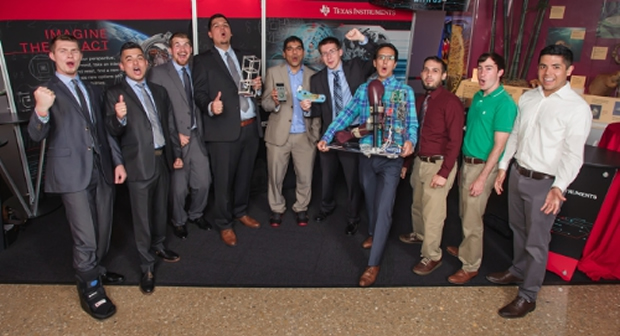Engineering students tackle real-world needs with game-changing ideas
With a growing demand for problem-solving technology, the pressure is on for engineering students to be industry-ready upon graduation. To aid in student readiness, Texas Instruments, in partnership with Mouser Electronics, hosted the TI Innovation Challenge Design Contest in North America. Future engineers were tasked with using TI technology to create solutions tackling challenges faced by our world today.
Peter Balyta, Ph.D., President, Education Technology, Texas Instruments, commented: "TI continually seeks ways to bring theoretical Science, Technology, Engineering and Math (STEM) subjects to life for students. One of the many ways we do this is by hosting the TI Innovation Challenge to give students practical engineering design experience. When students marry engineering education with hands-on creativity, they have the potential to turn their innovative prototypes into the next big technology that will change the world."
Of the nearly 180 teams entering technology solutions, three final teams were recognised at the annual award ceremony on 19th July in the TI Engineering and Innovation Hall at the Perot Museum of Nature and Science in Dallas. Their inventions addressed problems in the medical, space and health and wellness industries. After a day of touring a TI manufacturing facility and innovation centre, the students presented their projects to TI business leaders and contest judges, with the winning project being out of this world - literally.

First place: Dakotah Karrer, Vince Rodriguez, David Smith and Trent Tate from Texas A&M University took the expression "shooting for the stars" to a new level when they were named the overall winners for their project, TSat RF Satellite Communication. The students worked with Texas Space, Technology, Applications and Research (T-STAR) to create a prototype of a space communication system, which will be used to conduct low-Earth orbit research, a crucial need for growing space exploration efforts.
The critical long-range wireless communication for the satellite is provided by TI's Sub-1GHz CC1120 RF transceiver with the CC1190 RFFE amplifier which provides reliable communication and data from the T-STAR satellite to an Earth station.
Second place: Awarded to Texas A&M students David Cuevas, Nathan Glaser, Joe Loredo and Rafael Salas for their Powered, Programmable Elbow Orthosis. The brace-like device uses a TI ultra-low-power MSP432 MCU to stabilise, limit and assist elbow movements to restore upper arm functionality to users suffering from a range of injuries or disorders which weaken muscles and muscular activity.
Third place: Matthew Bries and Nagaraj Hegde from the University of Alabama brought home this distinction for SmartStep a device that uses a TI BLECC2540 wireless MCU to wirelessly monitor a user's activity through the insole of their shoes, which is displayed to the user through a smartphone app the team developed. The SmartStep is 99% accurate in detecting when a user is sitting or standing, two activities that are difficult for many commercially-available activity trackers to distinguish.
Winning projects are selected for their use of engineering practices and are judged on industry-ready standards, such as quality of the design and written documentation and effective use of TI technology. Cash prizes were awarded to the top three winners to help further the development of their design or to go toward academic pursuits: $10,000 for first place, $7,500 for second place, $5,000 for third place and $1,000 for categorical prize winners.
Congratulations to teams who placed in the category prizes:
- Best chance at commercialisation: University of Puerto Rico - Mayaguez – DynoCloud Exotic Pet Habitat System
- Best video demonstration: University of Florida – Pocket Passive SONAR
- Best use of TI wireless technology: Purdue University – TrackRx
- Most innovative home application: Carnegie Melon University – Autonomous Robotic Weeder
- Most unique concept: Rowan University – Tesla Art Installation
- Best overall use of TI products: University of Puerto Rico - Mayaguez – Rotator Display
- Best environmental: Florida State University – Home Energy Management System
- Best humanitarian: University of Wyoming – Futuristic Energy Saving Lighting System
- Best semester project: University of Texas at Austin – Handy Dandy Mirror Mirror











